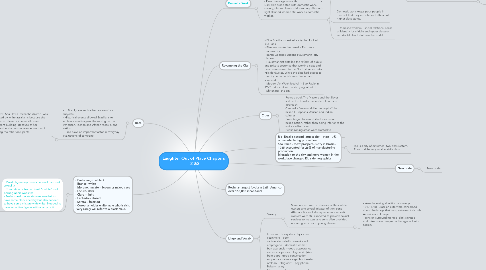
1. Race
1.1. - In Brazil, race and racism are sensitive subjects. - Historical events allowed Brazilians to embrace mesticagem, the mixing on the American, Iberian and African races in one nation - Race plays an important factor in everyday evaluations of someone.
1.1.1. - In 1993, Ana Flavia Pechanha Azerdo, was assaulted by white assailants because she delayed an elevator in a middle-class apartment building. Because of her complexion she was no seen as worthy of delaying the other occupants.
1.1.1.1. - There are inter-racial unions in shantytowns, which shows there is freedom from racism - Light-skinned individuals with “whiter” features have a better chance of success- better jobs and possibility of leaving shantytowns. - Some women think that seducing wealthy white men is a good way to get ahead. - -
2. - Preto, negro – black - Branco- white - Moreno, mulato – brown or mixed race - Escuro- dark - Claro – light - Fechado – closed - Sarara – freckled - Coroa- an older white male who is rich. Very rarely will refer to a black male.
2.1. - Mulata figure represents national race and sexuality - Correlation between Brazil “mulata” and pornographic websites - Professional mulata dancers needed to have some black ancestry but also needed to have some mixture with white. Needed to have seductive figures with a large butt.
2.1.1. New node
3. Cities
3.1. Freyre’s book The Masters and the Slaves shifted the transformation to a less racist approach. Created a “new world in the tropics” that mixed Europeans, African and Indian cultures. Brazil began to look at itself as a proud mixed nation, rather than being inferior to the white civilized world. Public zoning areas were created to separate the classes from one another.
4. Rio- Brazil’s second-largest city – 1985 - 7% of manufacturing production Sao Paulo - most prosperous city in Brazil – 1985 accounted for 26% of manufacturing production Migration to the city and more women in the workplace changed Rio’s demographics
4.1. Rio is a city of extremes- two class system. Poor or rich- very small middle class
5. Domestic Work
5.1. - Requires a good appearance, low paying. - Dark skin girls are not wanted- although this is the only type of work that they can find. - Earn one wage a month - Dark skin associated with domestic work, slavery, dirt and low social standing. Although light-skinned women still work as domestic worker.
5.1.1. “the minimum salary designation is not really a living wage; it is a subsistence wage.”Market rate for domestic work isn’t enough to cover the living expenses.
5.1.1.1. Some members of middle and upper class have no idea how to cook or clean because someone has always done it for them. How many different types of workers a person employees, shows their social prestige. It is a necessity to have a domestic worker to establish class standing.
5.1.1.1.1. Desire for domestic help is wanted across low, middle, and upper class – although the low-income families can’t afford to hire workers.
5.1.1.1.2. Domestic workers desire separation from employers Employers think that live-in workers take away from freedom
5.1.2. Domestic work keeps poor people in mindset that they are inferior to those of higher class status.
5.1.3. - Domestic workers – social relations- sense of identity for middle and upper classes- self-doubt about status in the world
6. Lingo and Vocab
6.1. Slavery
6.1.1. Slave women were mistresses of their white owners and sexual initiator of their sons After abolition of slavery women, domestic workers were still expected to provide sexual services to masters and sons. Also provided nurturing services to young children
6.1.1.1. - Years following abolition of slavery- 1840-1940- Brazilian elite were concerned about the image that was portrayed to North America and Europe. - Tension surrounding race- dark-skinned and mixed-race people had integrated into society
